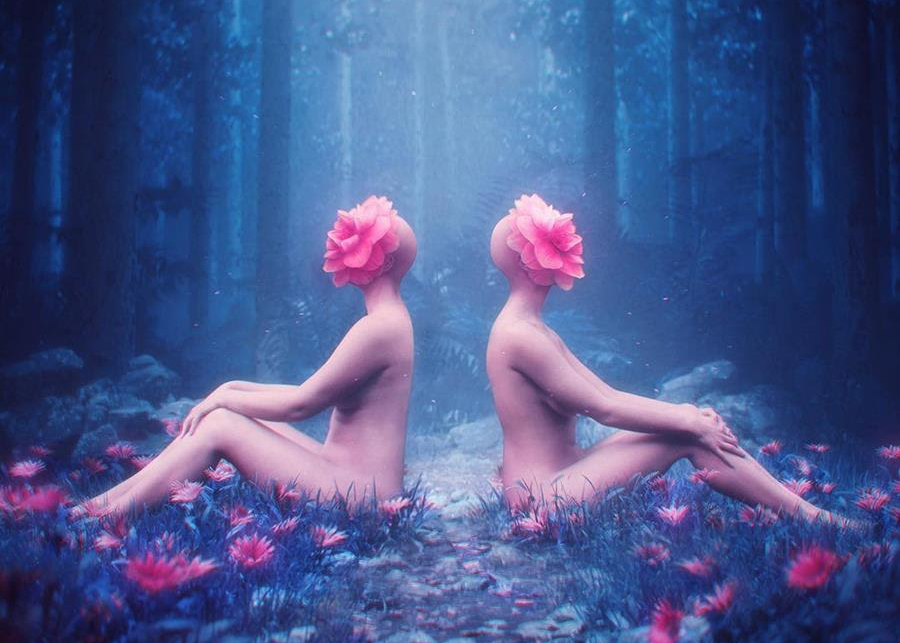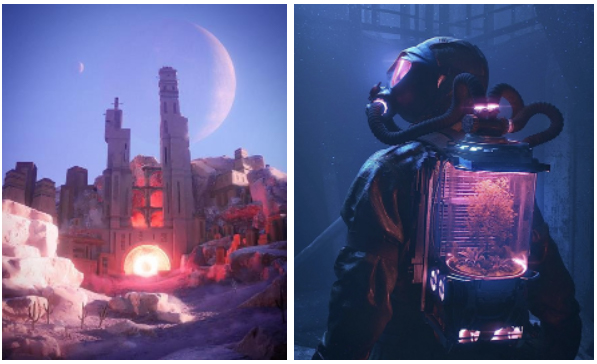Artist Spotlight: Brellias
by Ellie Zed, May 2022

Matías Vivanco Brellenthin, also known as Brellias, is a 3D Digital Artist base in Santiago, Chile. His work primarily focuses on creating surreal sci-fi and fantasy artwork, with a heavy focus on emotions and personal experiences. He started in 2017 with a series of posters and the intention of developing color and composition skills. Currently, he’s creating weekly artworks, working on projects with multiple clients worldwide, and teaching 3D.
Q: What drives your color pallete with the hues of pink, blue, and purple. When did you decide that was the style that best represented you?
Brellias: I think that after a lot of experimentation, the color purple is the best way I can represent my artwork ideals in a color. I like working with topics like emotions, memories, and stuff that astonish, and purple represents the resolution of a conflict; the merging of the colors red and blue, bad and good, the warm in the cold and the cold in the warm.
Q: We love your website tagline, “Visualizing the Unknown, so you don’t have to.” Tell us about how that came into play and what it means to you.
Brellias: Yes! It’s a phrase that I resonate deeply with at the time of working with people. I love to use my creativity to bring people’s ideas to life, and working with sci-fi and fantasy themes makes that fun and easier for me.
Q: What drove you to begin your creative journey and what were you doing before then?
Brellias: I started doing 2D art in Photoshop back in 2017. I was studying graphic design at university (I still am, things are slow but steady) and didn’t feel like I was learning as much as I wanted. So I decided to challenge myself to learn lighting and composition by doing daily poster designs. I played a lot with different themes and topics but then learned about vaporwave and cyberpunk styles which really caught my eye, especially the colors they used. Eventually, I got bored of Photoshop, as I wanted to expand my lighting knowledge, and working with 2D pictures was very limiting, so I downloaded Blender and started experimenting with it—and instantly fell in love with the creative freedom it gave me. Then decided to create daily content like I was doing earlier to master Photoshop. And the rest leads me to where I am now.

Q: Your work revolves around themes of sci-fi and fantasy. Where does this inspiration and influence come from?
Brellias: I’ve always loved sci-fi and fantasy stuff since I was a child. My first introduction to a PC was by playing video games like Warcraft, Starcraft, and Diablo at like 8 or 10 years old. I was amazed by the worlds that those games presented me, and I remember rushing from school only to keep exploring those worlds. I also made amazing things with clay as a child; landscapes, tribes, and cities; it was one of my earliest approaches to 3D modeling (laughs). So nowadays, my love for sci-fi and fantasy is my constant wish to keep exploring undiscovered worlds and realities.
Q: What was your experience like when starting to create NFTs? Where do you see the future of NFTs headed?
Brellias: It was a liberating experience. The main thing that I loved as I entered the NFT space was that I was still creating what I loved, but people started seeing the value in that and investing in it. Although I’ve worked with wonderful clients that appreciate every single moment of our projects, this was entirely different and entirely liberating. I can see NFTs being an important part of art’s future—I don’t want to say they will replace the art world we’ve known for centuries—but a nice new, more open, and understandable way of approaching it.
Q: What tools or software do you use when creating your 3D art?
Brellias: I mainly use Blender and Photoshop. Starting with both of those wasn’t as difficult as one would think. There’re plenty of tutorials that you can follow to learn new things. I started using Photoshop back in 2009 [and] it was mainly to create graphics for forum posts. I loved sharing stuff and making my posts really pretty. I’ve never stopped using it since then. Learning Blender wasn’t hard either—it’s just like having a conversation—you say, “I want to do this” and ask Google, and Google answers back! (laughs)